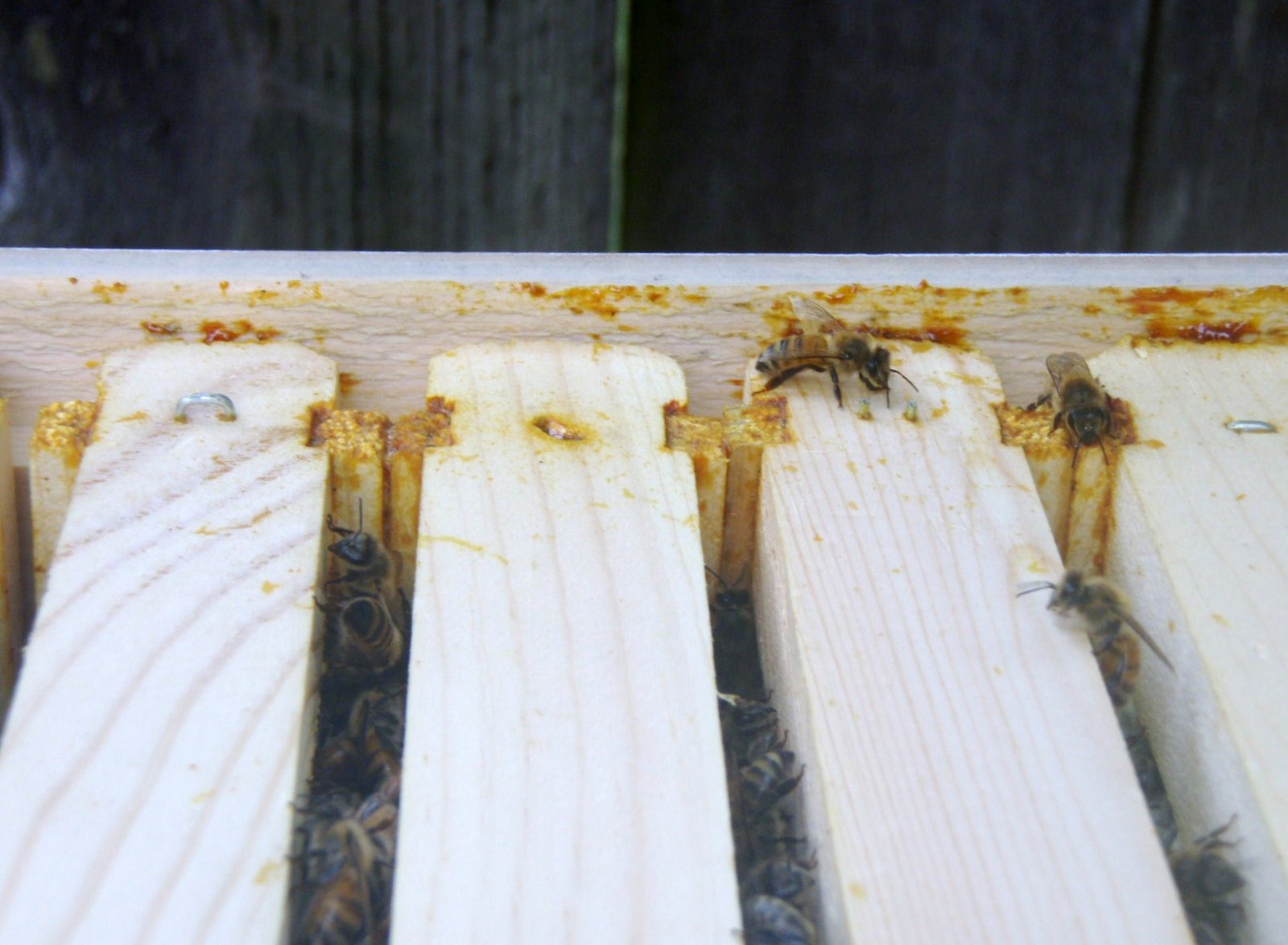Honey Super Time
Today was my first official Father’s Day, but I set a side a little slice of time in the afternoon to check in on the bees.
Both hives seem to be doing great. There are noticeably more bees per hive than I started out with. Most of the brownish-colored ones that I started with appear to have been replaced by the distinctly dark-striped ones. Attrition at work. It makes inspections a bit more challenging, because there are more bees to wrangle, and the new generation appears a bit more territorial. I also want to try to move inspection time back up to mid-day, when there will be less bees to deal with – this one and the last one I did right around 5pm, when more bees have already returned back to the hive from a day of foraging.
While I did not spot either queen, both hives had lots of fresh eggs, so the queens are around and doing their job. There was plenty of capped brood on a tight laying pattern in either hive. The bees in both hives seem to have well-occupied the majority of the frames in both hive boxes. There are still some frames with little to no comb drawn out, but I would say they total less than five per hive, and are spread out across both hive boxes.
West Hive still seems to produce a bunch more propolis (“bee glue”) than East Hive. The difference is definitely visible.


It’s a real pain to work with, and it stains like there is no tomorrow! If you wipe it off your skin using rubbing alcohol before it “sets”, it seems to come off OK. But I missed a spot last week, and no amount of soap and water or alcohol would make that yellow stain come off my skin.
 This is a nice frame almost fully packed with honey. The white capping is fully processed honey, stored away by the bees for later consumption. The lower half is honey making in progress. I fully expect this frame to be completely capped by next week. It already weighed a ton today, I’m curious how heavy it will feel next week!
This is a nice frame almost fully packed with honey. The white capping is fully processed honey, stored away by the bees for later consumption. The lower half is honey making in progress. I fully expect this frame to be completely capped by next week. It already weighed a ton today, I’m curious how heavy it will feel next week!
Since the bees are doing so well, and have expanded and built up their numbers sufficiently, I decided it was time to put on the honey supers.


You place it between the hive bodies and the honey super(s). The idea is that the workers will draw out comb on the frames in the honey supers, but since the queen won’t lay eggs in those cells (she can’t reach them), the bees will use them just for honey storage. Since there is plenty of room in the hive bodies for all the food the colony needs to survive, that honey in the upper supers is OK to take. Given enough space, it is the bees’ instinct to store as much food as is available to gather. Even if that is much more than they could ever consume.

Both hives had consumed the entire gallon of syrup each I had put on last weekend. While the syrup it helpful when the bees have to draw a lot of new comb, they also store it in cells similar to honey. Since I only want actual honey stored in my honey supers, and not sugar syrup, I had to stop feeding them at the same time I put on the supers. So I removed the feeder pails, and the honey super boxes that were protecting the pails from critters.





